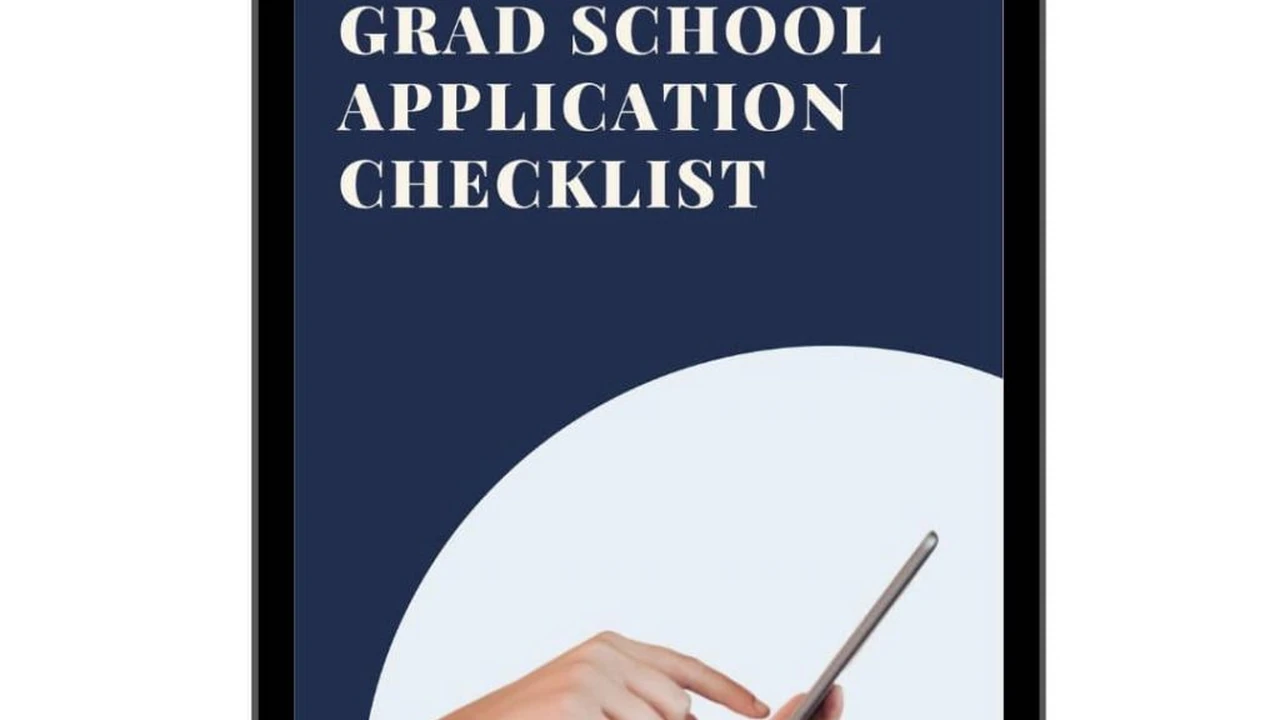Best Resources for Graduate School Applications
Start your financial journey with our guide to investing for beginners as a student. Learn the basics of growing your wealth.

Start your financial journey with our guide to investing for beginners as a student. Learn the basics of growing your wealth.
Guide to Investing for Beginners as a Student
Hey there, future financial wizards! So, you're a student, probably juggling classes, maybe a part-time job, and definitely trying to figure out what to eat for dinner that isn't instant noodles. The idea of 'investing' might sound like something for Wall Street bigwigs or people with trust funds. But guess what? It's not! Investing, even with a small amount of money, can be one of the smartest moves you make for your future. Think of it as planting a tiny seed today that will grow into a mighty tree later. This guide is all about demystifying investing for students, showing you how to get started, what to look out for, and even some specific platforms that can help you on your journey.
Why Should Students Consider Investing Early
You might be thinking, 'I barely have enough for coffee, how am I supposed to invest?' That's a fair point. But the magic of investing, especially when you start young, is compound interest. Albert Einstein supposedly called it the eighth wonder of the world, and for good reason! Compound interest means your earnings also start earning money. The earlier you start, even with small amounts, the more time your money has to grow. Imagine investing just $50 a month from now until you graduate. That seemingly small amount can add up significantly over time, thanks to the power of compounding. It's not about getting rich quick; it's about consistent, smart growth over the long term. Plus, learning about investing now gives you a massive head start on financial literacy, a skill that will serve you well for the rest of your life.
Understanding Investment Basics Key Concepts for Student Investors
Before we dive into specific platforms, let's quickly cover some fundamental concepts. Don't worry, we'll keep it simple and jargon-free.
Stocks and Shares What Every Student Needs to Know
When you buy a stock, you're essentially buying a tiny piece of a company. If the company does well, the value of your piece (your stock) goes up. If it struggles, the value might go down. Stocks offer the potential for higher returns but also come with higher risk. For students, investing in individual stocks can be exciting, but it's often recommended to diversify.
Bonds and Fixed Income Investments for Stability
Bonds are like lending money to a government or a company. In return, they promise to pay you back with interest over a set period. Bonds are generally considered less risky than stocks but also offer lower returns. They can be a good way to add stability to your portfolio.
Mutual Funds and ETFs Diversification Made Easy for Students
This is where it gets really interesting for beginners. Instead of buying individual stocks or bonds, you can buy into a mutual fund or an Exchange Traded Fund (ETF). These are collections of many different stocks, bonds, or other assets. When you invest in a fund, you're instantly diversified across many companies, which significantly reduces your risk. ETFs are particularly popular because they often have lower fees and can be traded like stocks throughout the day. For students, ETFs are often a fantastic starting point because they offer broad market exposure without requiring you to pick individual winners.
Risk Tolerance and Investment Goals for Young Investors
Before you put any money in, think about your 'risk tolerance.' How comfortable are you with the idea of your investment going down in value? As a student, you likely have a long time horizon before you need this money, which means you can generally afford to take on more risk for potentially higher returns. However, never invest money you can't afford to lose, especially if it's money you need for tuition or rent next month! Also, define your investment goals. Are you saving for a down payment on a house in 10 years? For retirement in 40 years? Or just trying to grow some extra cash? Your goals will influence your investment strategy.
Top Investment Platforms for Students and Beginners
Now for the exciting part: where can you actually start investing? The good news is that many platforms are designed with beginners in mind, offering low minimums and user-friendly interfaces. Here are a few popular options, along with their pros, cons, and typical use cases for students.
Fidelity Go Automated Investing for Busy Students
What it is: Fidelity Go is a robo-advisor service offered by Fidelity, a well-established financial services company. A robo-advisor uses algorithms to manage your investments based on your financial goals and risk tolerance. It's largely hands-off once you set it up.
Pros for Students:
- Low Minimum: You can start with as little as $0 to open an account, and they recommend starting with $10 to invest. This makes it incredibly accessible for students with limited funds.
- Automated Investing: Perfect if you're busy with studies and don't want to spend hours researching stocks. Just set up recurring deposits, and it does the rest.
- Diversification: Your money is invested in a diversified portfolio of Fidelity Flex® ETFs, which have no expense ratios.
- No Advisory Fees for Balances Under $25,000: This is a huge plus for students. You won't pay advisory fees on balances below $25,000, making it very cost-effective.
Cons for Students:
- Less Control: You have less direct control over individual investments compared to a self-directed brokerage account.
- Limited Customization: Portfolios are pre-built based on your risk profile.
Typical Use Case: Ideal for students who want to start investing with minimal effort, prefer a hands-off approach, and are looking for a low-cost way to get diversified exposure to the market. Great for long-term savings goals like retirement or a future down payment.
Estimated Cost: No advisory fee for balances under $25,000. For balances over $25,000, it's 0.35% per year. Underlying ETF expense ratios are 0% for Fidelity Flex® ETFs.
Charles Schwab Intelligent Portfolios Smart Diversification
What it is: Charles Schwab Intelligent Portfolios is another popular robo-advisor service. It offers automated investment management with a focus on diversified portfolios, including a significant allocation to cash for rebalancing purposes.
Pros for Students:
- No Advisory Fees: This is their standout feature. Schwab Intelligent Portfolios charges no advisory fees, which is fantastic for cost-conscious students.
- Diversified Portfolios: Investments are spread across various asset classes using Schwab ETFs.
- Automatic Rebalancing: The portfolio is automatically rebalanced to maintain your target asset allocation.
- Access to Human Advisors (Premium): For a higher minimum and fee, you can get access to human financial planning, though this is likely beyond a typical student's needs.
Cons for Students:
- Higher Minimum: Requires a $5,000 minimum to get started. This might be a hurdle for many students.
- Cash Allocation: A portion of your portfolio is held in cash, which some investors might see as a drag on returns, especially in a bull market.
Typical Use Case: Best for students who have managed to save a bit more and are looking for a completely fee-free automated investing solution from a reputable firm. Good for those who prioritize low costs and broad diversification.
Estimated Cost: No advisory fees. Underlying ETF expense ratios apply (typically low, around 0.03% - 0.25% depending on the ETFs in your portfolio).
Robinhood Commission-Free Trading for Active Learners
What it is: Robinhood is a popular commission-free trading app that revolutionized the brokerage industry. It's known for its user-friendly interface and making stock trading accessible to everyone.
Pros for Students:
- Commission-Free Trading: Buy and sell stocks, ETFs, and options without paying commissions. This is a huge cost saver, especially for smaller trades.
- Fractional Shares: You can buy fractions of expensive stocks (e.g., $5 of Amazon stock), making it possible to invest in high-priced companies with a small budget.
- User-Friendly App: The app is incredibly intuitive and easy to navigate, perfect for beginners.
- Crypto Trading: If you're interested, Robinhood also offers commission-free cryptocurrency trading.
Cons for Students:
- Can Encourage Over-Trading: The ease of trading can sometimes lead to impulsive decisions or over-trading, which is generally not recommended for long-term investing.
- Limited Educational Resources: While they've improved, their educational content might not be as comprehensive as traditional brokerages.
- No Robo-Advisor Option: You're on your own for investment selection and management.
Typical Use Case: Great for students who want to actively learn about investing by buying individual stocks or ETFs, are comfortable with a bit more hands-on management, and appreciate commission-free trading and fractional shares. It's also good for those interested in dabbling in crypto.
Estimated Cost: $0 commissions on stocks, ETFs, and options. Other fees may apply (e.g., regulatory fees, Robinhood Gold subscription for advanced features at $5/month).
Acorns Micro-Investing and Round-Ups for Everyday Savings
What it is: Acorns is a micro-investing app that makes it easy to invest your spare change. It rounds up your everyday purchases to the nearest dollar and invests the difference into a diversified portfolio of ETFs.
Pros for Students:
- Micro-Investing: You can start investing with literally pennies. The 'Round-Ups' feature makes saving effortless and almost unnoticeable.
- Automated and Diversified: Your money is automatically invested into one of five diversified portfolios based on your risk tolerance.
- Found Money: Partner brands offer 'Found Money' where they invest a percentage of your purchase into your Acorns account.
- Acorns Earn: Discover job opportunities and earn extra cash that can be invested.
Cons for Students:
- Monthly Fee: Acorns charges a monthly fee ($3, $5, or $9 depending on the plan). For very small balances, this fee can eat into your returns significantly.
- Limited Control: Like other robo-advisors, you have little control over specific investments.
Typical Use Case: Excellent for students who struggle to save consistently and want an extremely low-friction way to start investing. It's perfect for building a small nest egg over time through passive saving. The monthly fee means it's more suitable if you're consistently investing more than just a few dollars a month.
Estimated Cost: $3/month for Acorns Personal (Invest, Later, Checking), $5/month for Acorns Personal Plus (adds emergency fund, premium education), $9/month for Acorns Premium (adds family accounts, custom portfolios, and more).
M1 Finance Build Your Own Portfolio or Use Expert Pies
What it is: M1 Finance is a unique platform that combines elements of a robo-advisor with a self-directed brokerage. You build a portfolio of stocks and ETFs (called 'Pies') and M1 automatically invests and rebalances it for you.
Pros for Students:
- Customization and Automation: You get to choose your investments, but M1 automates the buying, selling, and rebalancing. It's a great middle ground between full control and full automation.
- Fractional Shares: Invest in fractional shares, allowing you to diversify even with small amounts.
- No Management Fees: M1 Finance charges no management fees for its basic service.
- Expert Pies: If you don't want to build your own, you can choose from pre-built 'Expert Pies' designed by M1's team.
Cons for Students:
- Higher Minimum: Requires a $100 minimum to open an investment account.
- Limited Trading Windows: M1 only executes trades during specific windows each day, which might not suit active traders.
Typical Use Case: Ideal for students who want more control over their investment choices than a traditional robo-advisor but still appreciate the automation of rebalancing and fractional shares. Good for those who have a slightly larger initial investment and want to learn more about portfolio construction.
Estimated Cost: $0 management fees. Underlying ETF expense ratios apply. M1 Plus (premium features) is $125/year.
Practical Tips for Student Investors Getting Started
Okay, you've got the basics and some platforms in mind. Here are a few more practical tips to help you get started on the right foot.
Start Small and Be Consistent The Power of Dollar-Cost Averaging
You don't need thousands of dollars to start. Even $25 or $50 a month can make a difference over time. The key is consistency. Set up automatic transfers from your checking account to your investment account. This practice is called 'dollar-cost averaging,' and it's brilliant. By investing a fixed amount regularly, you buy more shares when prices are low and fewer when prices are high, averaging out your purchase price over time and reducing the impact of market volatility.
Prioritize Your Emergency Fund Before Investing
Before you put a single dollar into investments, make sure you have an emergency fund. This is typically 3-6 months' worth of living expenses saved in an easily accessible, high-yield savings account. Life happens – unexpected medical bills, car repairs, or losing a part-time job. Having an emergency fund prevents you from having to sell your investments at a loss if an unexpected expense pops up.
Understand Your Time Horizon and Risk Tolerance
As mentioned earlier, your time horizon (how long you plan to invest) and risk tolerance are crucial. If you're investing for retirement, you have decades, so you can afford to be more aggressive. If you're saving for a car next year, investing in the stock market might be too risky. Be honest with yourself about how much risk you're comfortable with.
Keep Learning and Stay Informed About Personal Finance
The world of investing is constantly evolving. Don't just set it and forget it (unless you're using a robo-advisor and that's your strategy). Read financial news, follow reputable financial blogs, listen to podcasts, and take advantage of the educational resources offered by your chosen brokerage. The more you learn, the more confident and successful you'll become as an investor.
Avoid Emotional Decisions and Market Timing
One of the biggest mistakes new investors make is letting emotions drive their decisions. When the market goes down, it's easy to panic and sell. When it's soaring, it's tempting to jump in with all your money. Resist these urges! Market timing (trying to buy low and sell high) is incredibly difficult, even for seasoned professionals. Stick to your long-term plan, continue dollar-cost averaging, and remember that market downturns can actually be opportunities to buy assets at a lower price.
Common Pitfalls for Student Investors and How to Avoid Them
While investing is exciting, there are some common traps that new investors, especially students, can fall into. Being aware of them is the first step to avoiding them.
Ignoring Fees and Their Impact on Long Term Returns
Fees might seem small, but over decades, they can eat significantly into your returns. Always be aware of management fees, trading commissions, and expense ratios of ETFs or mutual funds. Even a difference of 0.5% in annual fees can cost you tens of thousands of dollars over a long investing horizon. This is why platforms with low or no advisory fees and low-cost ETFs are often recommended for beginners.
Falling for Get Rich Quick Schemes and Penny Stocks
The internet is full of promises of quick riches. Be extremely skeptical of anything that sounds too good to be true, especially when it comes to investing. Penny stocks (stocks trading for less than $5 per share) are often highly volatile and speculative. While they might offer huge gains, they also carry enormous risk and are often associated with scams. For long-term wealth building, focus on diversified, established investments, not speculative gambles.
Not Diversifying Your Investments Spreading Your Risk
Putting all your eggs in one basket is a recipe for disaster in investing. If you only invest in one company and that company struggles, your entire investment is at risk. Diversification means spreading your money across different types of assets (stocks, bonds), different industries, and different geographical regions. This reduces your overall risk. This is why ETFs and mutual funds are so great for beginners – they offer instant diversification.
Investing Money You Need in the Short Term
As mentioned with the emergency fund, never invest money that you might need in the next 1-5 years. The stock market can be volatile in the short term. If you invest your tuition money and the market drops right before your payment is due, you could be in a tough spot. Investments are for long-term goals.
Getting Overwhelmed and Not Starting at All
The world of finance can seem daunting, and it's easy to get overwhelmed by all the information. But don't let perfect be the enemy of good. The most important step is simply to start. Pick one of the beginner-friendly platforms, set up a small recurring deposit, and begin your journey. You'll learn more by doing than by endlessly researching.
Building Your Financial Future One Step at a Time
Investing as a student might seem like a big leap, but it's one of the most empowering financial decisions you can make. By understanding the basics, choosing the right platforms, and avoiding common pitfalls, you're not just growing your money; you're building a foundation of financial literacy and discipline that will benefit you for decades to come. Remember, consistency beats intensity in the long run. So, take that first step, start small, and watch your financial future grow!
:max_bytes(150000):strip_icc()/277019-baked-pork-chops-with-cream-of-mushroom-soup-DDMFS-beauty-4x3-BG-7505-5762b731cf30447d9cbbbbbf387beafa.jpg)






